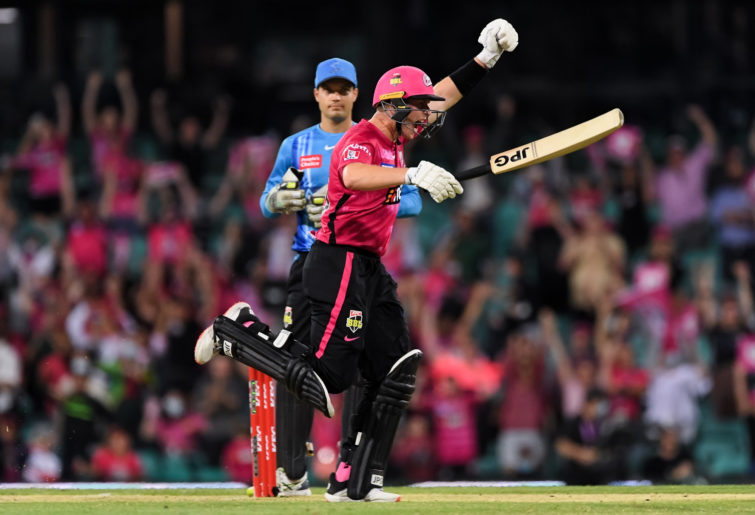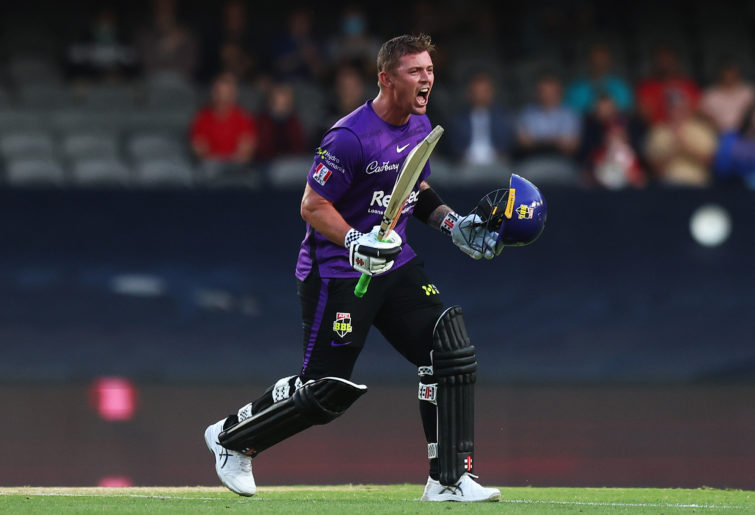The draft was one of the measures put in place to breathe a new lease of life into the beleaguered franchise T20 tournament. Taking its cues from the IPL and its successful draft system, the new initiative aimed to bring refreshed interest into the tournament and attract the biggest names in the world to Australian shores amidst a cricket calendar that gets shorter every year.
The BBL spared no expense, attracting huge names in T20 circles to headline and advertise the draft. Names that would attract crowds, increase the standard of competition and reinvigorate the BBL to attract those oh so important TV rights dollars.
Unfortunately, it appears that the memo didn’t reach the teams. Some of the biggest names in T20 cricket – including Jason Roy, Dwayne Bravo and Kieron Pollard – were left undrafted. Plus, two players being paid a marketing salary by Cricket Australia, Andre Russell and Faf du Plessis, missed out on selection as well, a move that will surely leave the BBL and Cricket Australia with egg on its face.
A common theme throughout the draft from all the teams was that availability was the most coveted ability. Therein lies the issue: with competing franchise T20 tournaments in the UAE and South Africa beginning in early January, many of the top name players have already committed to these tournaments.
This means a great number of the top-tier talent the BBL had pursued to join the draft will be unavailable for parts of the tournament.
Cricket Australia obviously thought the allure of elite talent would be enough to entice teams, despite them leaving for riches overseas halfway through; but pick after pick, the cream of the crop went ignored for the safety of players that would be in uniform for the duration of the competition.
The BBL has taken a battering over the last 18 months. The UAE and South African tournaments, flushed with IPL money, have severely impacted the availability of international talent. The rival competitions are shorter and offer more lucrative contracts. Previous talent like Jos Buttler and Jason Holder aren’t bothering with the BBL, and just about every other major international player that has previously played in the BBL has taken up a contract with one of the rival tournaments.
All this comes at a time that Cricket Australia are being taken to court by Channel 7, one of their major broadcast partners, to recoup losses after Seven alleged the BBL wasn’t up to a standard promised during their contract negotiations.
Having far less money to throw around than its rivals and a tournament that is substantially longer for the reduced wages on offer means that players are far less likely to be available for the whole tournament, as we have seen already in this year’s draft.
On top of that the teams themselves have not gotten on board with the party line and have prioritised availability over top billing.
This became uncomfortably obvious the longer the broadcast went on; it started with a shot of Faf du Plessis and the panel continued to push the selections of him and the other big names, specifically West Indian Andre Russell. The further into the draft they got the more frantic the panel got, speculating the landing point of the Windies allrounder.
The amount of elite talent left unselected would be keeping Cricket Australia powerbrokers up at night as they try to prove that the BBL is worth a shiny new TV deal and that prospect becomes a lot more difficult as all the household names leave early or bypass the BBL entirely.
It is exactly this attitude that has gotten the BBL into trouble. For over a decade it has been treated like a gimmick, all show and no substance. Almost every single season there has been something tinkered or added to the competition to garner more interest. The draft has been one of the few that potentially could have improved the competition.
While the IPL was amassing an incredible financial war chest to push for global expansion, the BBL was experimenting with members of the crowd sitting on a platform waiting for catches for cash, replacing the coin toss for a bat flip, substitute players and host of other ideas that have come and gone.
Even the draft was systemic of this issue: despite the availability issues the BBL’s runners assumed that talent would win out and pushed hard to advertise players they knew weren’t going to be around for the tournament. They assumed simply showcasing premier talent, even temporarily, would tip the scales.

Hayden Kerr scores the winning runs for the Sydney Sixers during the BBL Challenger final.. (Photo by Steven Markham/Icon Sportswire via Getty Images)
The teams however have taken a different tack, putting aside the show and trying to put together a winning roster. While the consistency and continuity will be helpful to teams chasing the BBL12 title, some of the left-of-square talent selected over the more easily recognised household names may not be a winning recipe for the BBL overall.
To add to the headaches of a crowded international schedule, Steve Smith has recently voiced his concerns over the BBL prioritising overseas talent over local players. Currently the top Australian’s can earn $200,000 for a full 14-game tournament, while the ‘Platinum’ players earn $340,000 regardless of how many games they play.
That is a huge disparity, considering some elite world talent who are Australian currently take part in the tournament.
Glenn Maxwell is one of the world’s best T20 players, Aaron Finch is the national captain, and along with regular Australian team players like Adam Zampa, Marcus Stoinis, Mitchell Marsh along with a host of others, the distinct difference between what a top Australian can earn and overseas players can earn is startling.
It took a paycheck similar to the ‘Platinum’ players to stop David Warner from joining the UAE tournament, and Chris Lynn signed at the 11th hour as well after seriously considering a stint overseas. If the contracts don’t become more competitive, Australian players taking a pay day overseas could be a problem that rears its head more frequently in subsequent years.
We may be arriving at the point that a T20 tournament that takes place over the Christmas school holidays is no longer a sustainable idea. With the crowded international schedule thinning out, the available imports and teams not thrilled with the idea of having part time marquee players. Perhaps shifting the BBL to somewhere a little less crowded might be in order.
A potential change might be to reduce the length of the tournament and move it to mid or late October. Whenever the AFL venues can adequately change from a football set-up to have a pitch suitable for international standard cricket.
It is a relatively quiet part of the year for cricket, too late in the year for northern hemisphere cricket and still too early for southern hemisphere cricket.
Playing that early, while there are fewer international games, might mean that Australia’s Test stars could be available for the tournament as well, and no clashes with other franchise T20 tournaments would mean that international players are more likely to be available for the duration.
Reducing the length of the tournament would also go a long way to attracting bigger names, as the length of the competition has been a contentious point for a number of seasons.
The holiday period has long been seen as the ideal period to have the Big Bash because of the school holidays. However, I don’t believe the impact of moving the competition will hurt too much. TV rights are the big money earners more than crowd attendance nowadays.
If you can have a tournament with the best players available in October and November, it will be more lucrative than a tournament where the few big names that signed on, up and leave halfway through in December or January.
School holidays are overrated anyways: children can’t take themselves to the cricket, parents have to take them. How many parents have an overabundance of time off during the summer holidays?
It’s not like many of the games are on during school hours. Parents’ work schedules are still the precipitating factor to families attending Big Bash games. If parents take their kids to the cricket on a Friday night in December there is no reason why they can’t take them on a Friday night in October.

Ben McDermott of the Hobart Hurricanes celebrates after scoring a century. (Photo by Mike Owen/Getty Images)
As Kerry Packer eloquently said when he was setting up World Series Cricket, “People will watch you, because you are the best.”
If the BBL can put together a tournament that focuses on the quality of the competition, shelves the gimmicks and highlights the cricket, allows pathways to have the best available playing as long as possible then the crowds will turn up. Not just in the stadiums but more importantly in front of TV screens, which in turn will allow Cricket Australia to return to the bargaining table to leverage more money from broadcasters, compiling a war chest of their own to help all facets of cricket in Australia. As they say, a rising tide lifts all boats.
Now an October start may not work: the knock-on effect to the Sheffield Shield, the availability of pitches, among other factors. But one thing is for certain the writing is on the wall for the BBL.
The system as it is, is unsustainable. The rival competitions fuelled by IPL money will continue to grow, and they will be able to offer larger contracts which will reduce the import pool even more. The BBL will dwindle and become less lucrative, so soon even the Australian players will be looking where the grass is greener and make the BBL even less sustainable.
Short of a huge infusion of capital, it has lost too much ground to an adversary with nearly infinite resources. The best course of action would be to get out of their way, grind out some new success and build again.
